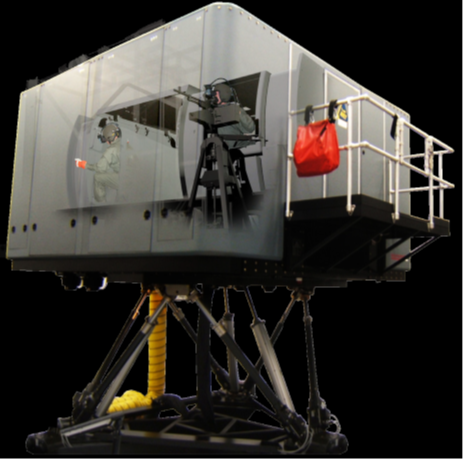
PATUXENT RIVER, Md. — The Naval Aviation Training Systems and Ranges program office (PMA-205) recently delivered the first fully capable Naval Aircrewman Training Systems (NATS) and Marine Common Aircrew Trainers (MCAT) to the fleet, the Naval Air Systems Command said April 12.
The NATS was delivered to Naval Air Station Mayport, Florida, and two MCATs were delivered to Marine Corps Air Station New River, North Carolina. Both the NATS and the MCAT devices are being used to conduct initial, integrated crew training and proficiency flights, ultimately reducing flight hours in operational aircraft, reducing and and in some cases eliminating ordnance expenditures, and reducing high-risk evolutions that could lead to mishaps.
“This is long overdue” said Capt. Lisa Sullivan, PMA-205 program manager, who oversees the two programs. “In the past, H-60, H-53, H-1, and V-22 aircrew did not have an opportunity to start their training in a controlled simulator environment before entering into a dynamic aircraft environment. For our Marine Corps aircrew, it provides the ability to gain initial weapon engagement proficiency in a simulator before live fire training on operational flights.”
The NATS device is the first of nine deliveries under the Aircrewman Training Optimization program, an effort enhancing their hardware and software capability baseline. It provides a blend of virtual and physical environments for training MH-60R aircrew in crew coordination; aerial gunnery; hoist operations; search and rescue; and vertical replenishment. The Navy is incorporating these enhanced environments into Navy helicopter Wing Training Manuals.
The fleet will officially begin training in the MCAT this spring and during recent MCAT mission scenario testing, Marine Corps enlisted aircrew subject matter experts said the MCAT will be a training and readiness game-changer. Prior to the delivery of the new device, Marine Corps CH-53E, MV-22B, and UH-1Y enlisted aircrew trained on operational aircraft.
- Red Sea Update - April 26, 2024
- U.S. Begins Construction on Temporary Pier to Deliver Humanitarian Aid to Gaza - April 26, 2024
- IKE Carrier Strike Group Arrives in the Eastern Mediterranean - April 26, 2024






